soil conservation and land management
1/18
There's no tags or description
Looks like no tags are added yet.
Name | Mastery | Learn | Test | Matching | Spaced |
|---|
No study sessions yet.
19 Terms
detachment
particals break apart from parent rock
transport
particals then move by wind or water
deposition
the placing of the eroded material in a new location
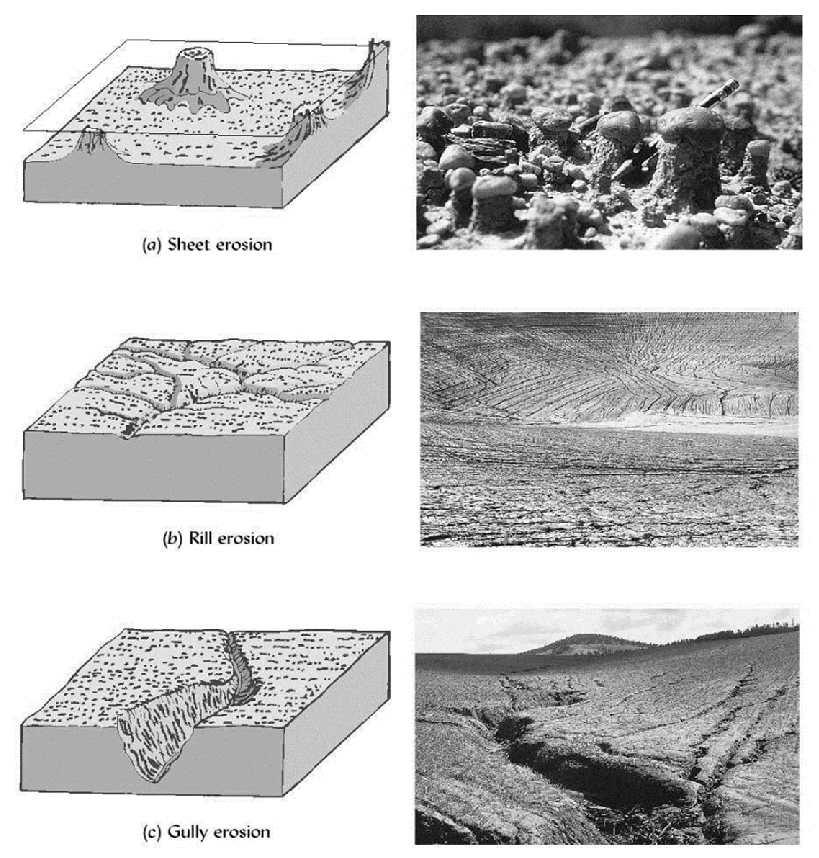
sheet (water erosion)
relatively uniform erosion from the entire soil surface
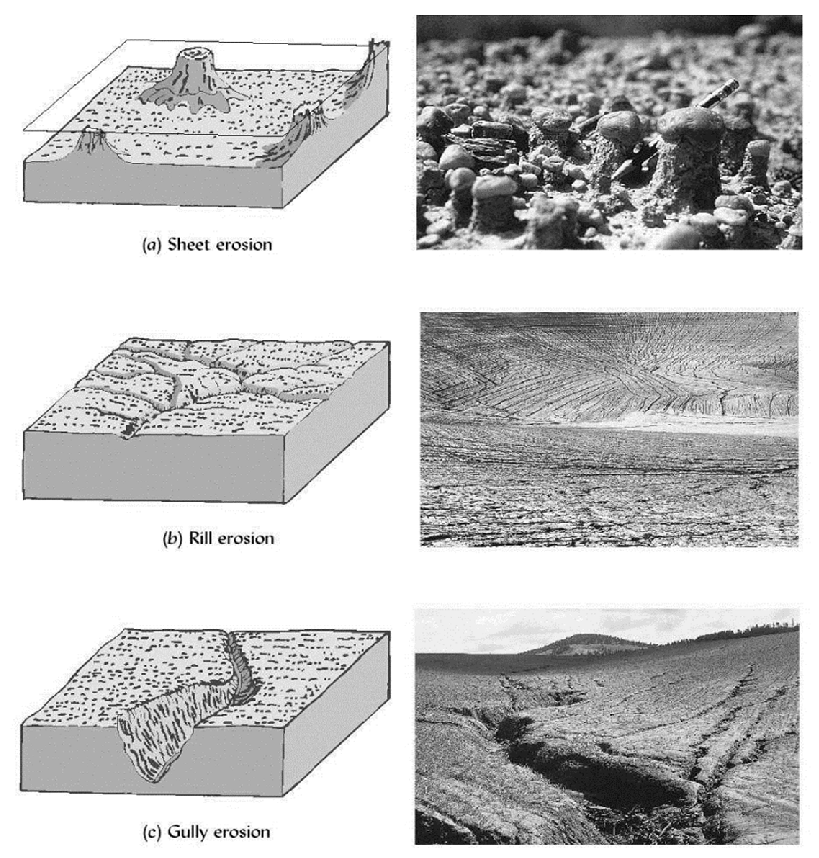
rill (water erosion)
initiated when the water concentrates in small channels (rills) as it runs off the soil. subsequent cultivation mat erase rills, but it does not replace the lost soil.
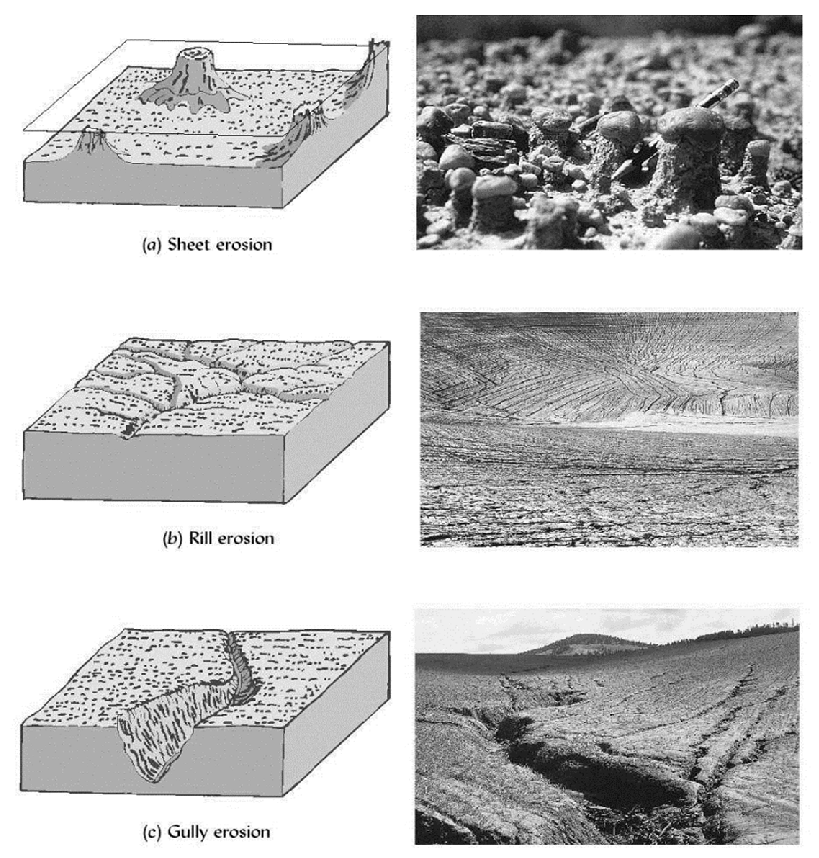
gully (water erosion)
creates deep channels that cannot be erased by cultivation
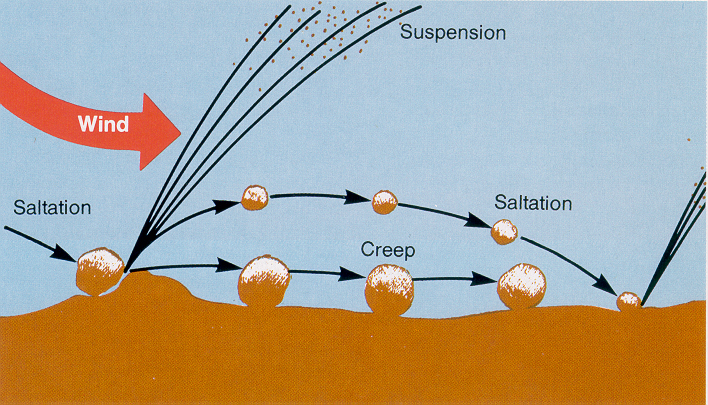
soil creep (wind erosion)
sliding/rolling
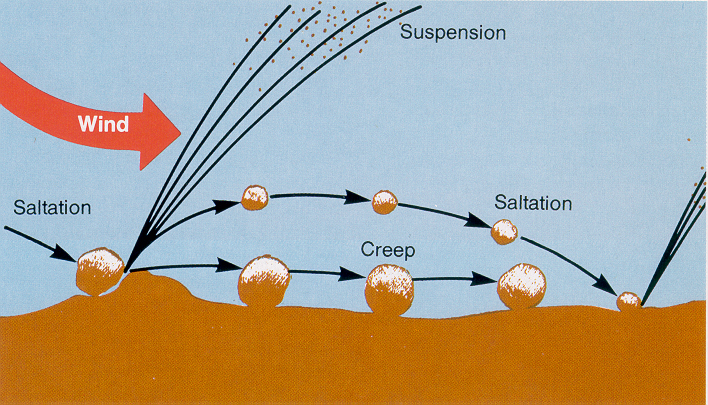
saltation (wind erosion)
bouncing
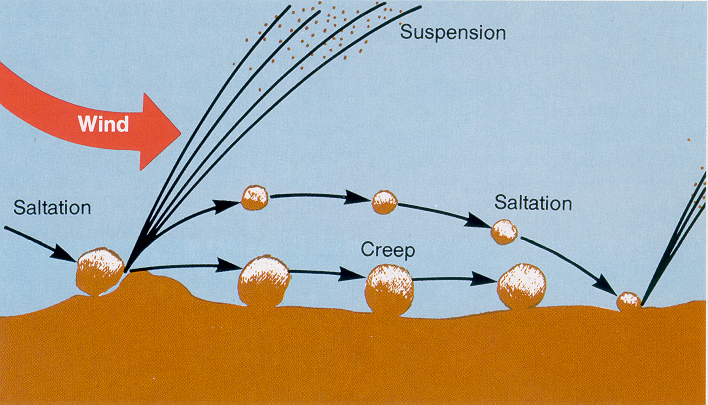
suspension (wind erosion)
long-term/distance dispersal
cover crops (bmp)
planting cover crops such as grasses and legumes helps protect the soil from erosion by providing ground cover and stabilizing the soil structure
fall/winter cover crop takes up nitrate preventing leaching losses
can significantly reduce N fertilizer needs
mulching (bmp)
applying mulch such as straw, wood chips, or plastic coverings to the soil surface helps to protect against erosion by reducing the impact of rainfall and wind on the soil
grass contour hedges (bmp)
the use of vegetative barriers to create natural terrance
winbreaks
the effect of a windbreak on wind velocity. the wind is deflected upward by the trees and is slowed down even before reaching them. on the leeward side further reduction occurs.
what nutrients can impact water quality
nitrogen and phospherous - can lead to eutrophication
conservation tillage
minimizing soil disturbance, prevents erosion and keeps soil-bound nutrients in place
constructed wetlands
artificial wetland ecosystem vegetation for biological treatment of water
treat wastewater or contaminated runoff
reduce contaminants in storm water runoff or other water flows
land/businesses that the DE NMP requires nutrient management plan for
golc courses, turf, athletic fields, lawn care companies, agriculture (10+ acres)
elements of a DE nutrient management plan
plant identification
animal information as with AWMP
field maps
crop and nutrient information
best management practices (voluntary)
implementation records
required practices for the DE NMP
realistic yield goals (rate)
manure storage requirements
soil test and manure analysis (rate)
application restrictions (rate, timing, and method)
record keeping and reporting